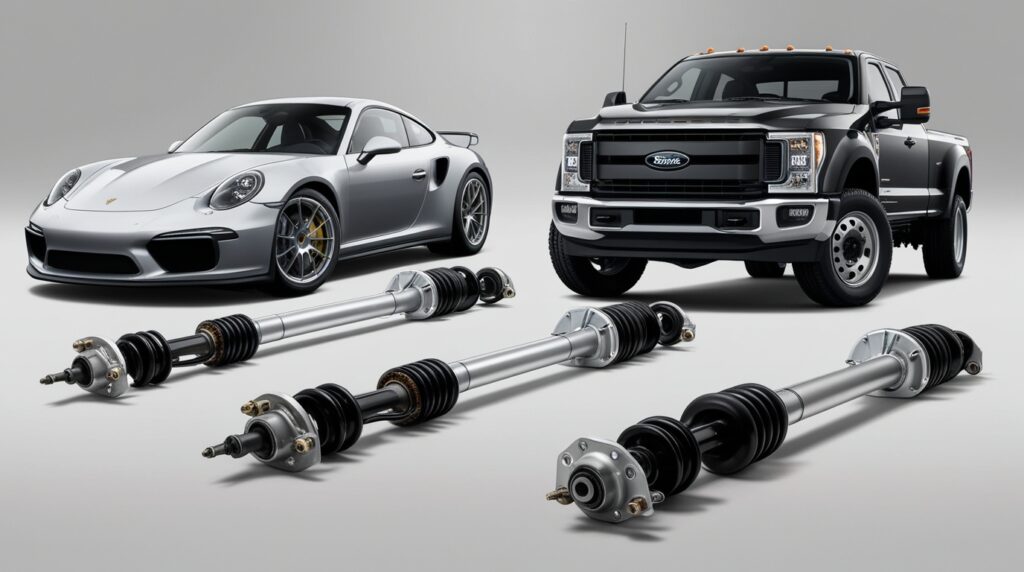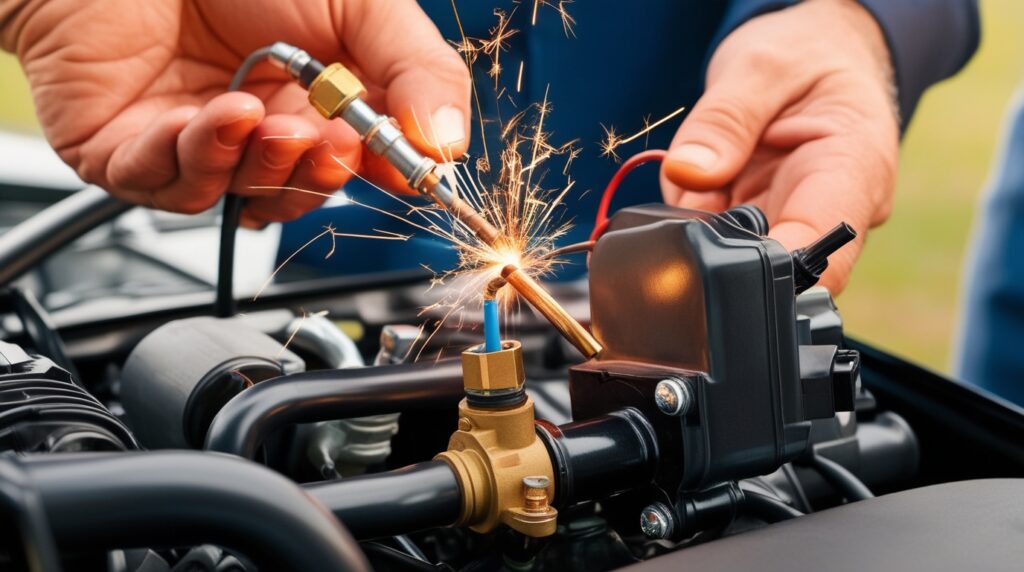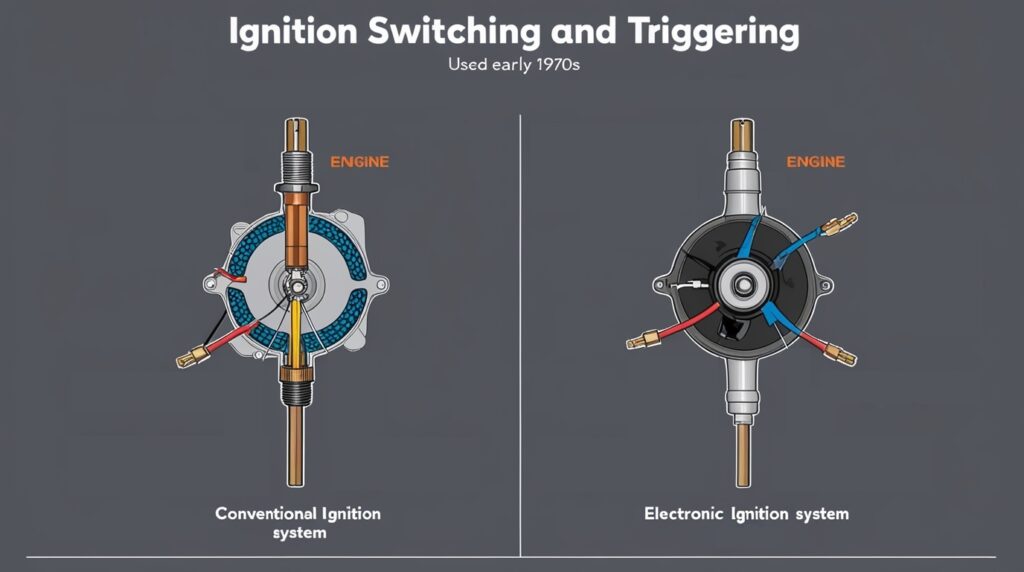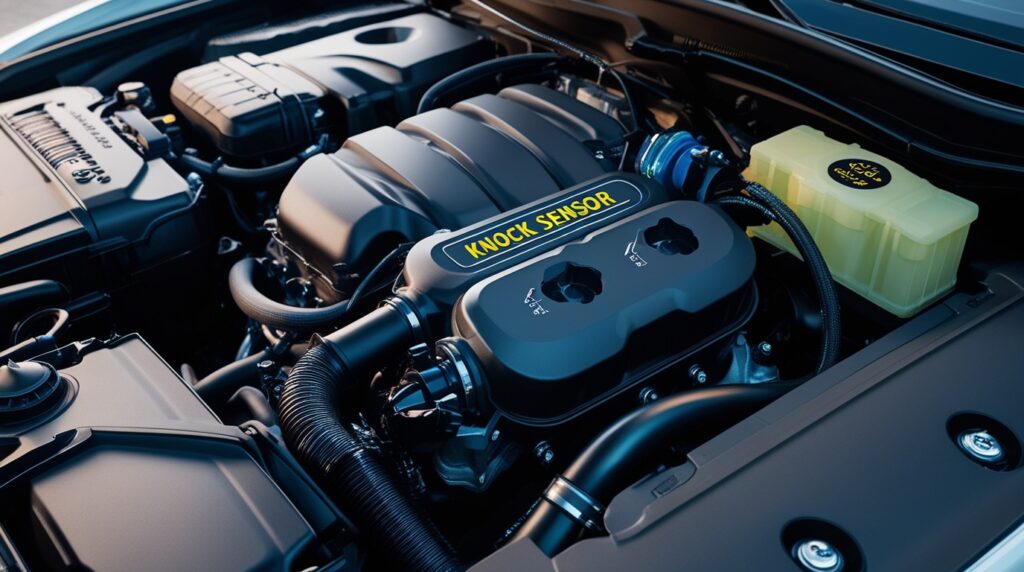
Introduction
The Torsion Bar Suspension System is a mechanical configuration widely used in automobiles and other vehicles, notable for its unique ability to absorb shocks and provide spring action through the twisting of a solid bar or tube. This suspension system operates by anchoring one end of the torsion bar to the vehicle’s frame, with the other end attached to the wheel assembly via a control arm. When a vehicle encounters bumps or uneven terrain, the torsion bar twists, allowing for independent wheel movement, which enhances stability and ride comfort. Its compact design contributes to reduced weight and better space efficiency compared to traditional coil spring systems, making it particularly appealing for various automotive applications, including light-duty trucks and performance vehicles.
The use of torsion bars has historical significance, with applications ranging from General Motors’ light-duty pickup trucks in the 1960s to high-performance models like Porsche’s 356 and 911 series. Beyond the automotive sector, torsion bar suspensions are also critical in military vehicles, where they enhance mobility and stability across rugged terrains. However, the system is not without its controversies; it can lead to diminished vehicle controllability during cornering and may require frequent maintenance due to components like needle bearings, which are susceptible to wear and dirt exposure.
Despite these drawbacks, the advantages of torsion bar suspension systems, such as durability, adjustability, and cost-effectiveness, make them a popular choice among manufacturers and consumers. They allow for customization of ride height and load-bearing capabilities, providing practical solutions for vehicles that face varied driving conditions. As technology advances, the torsion bar suspension is undergoing further innovations that promise to enhance its performance while retaining its fundamental benefits.
Mechanism
Overview of Torsion Bar Suspension
The torsion bar suspension system operates on the principle of a straight solid bar or tube that twists to provide spring action. Manufacturers typically form the torsion bar from either a solid metal rod or metal leaves configured into a circular or square shape. One end of the bar is connected to the wheel assembly via a lever or a wishbone-shaped member, allowing the wheel to deflect while maintaining the spring effect of the bar. This compact arrangement, positioned both transversely and parallel to the frame, offers reduced weight advantages, although it may not effectively resist driving and braking torques
Functionality of Torsion Bar Suspension
When a vehicle encounters a bump, the torsion bar twists, absorbing kinetic energy and mitigating the effects of centrifugal forces acting on the car during cornering. This mechanism contributes to stability, which is why it is often referred to as an anti-roll bar. The torsion bar’s design allows it to adjust height through a tightening mechanism at the anchor end, providing flexibility in the suspension system.
Key Components of Torsion Bar Suspension
The primary components of a torsion bar suspension system include:
Torsion Bar
The torsion bar itself acts as a spring, absorbing forces exerted on the wheel assembly. It is designed to balance these forces, ensuring the lower control arm maintains a specified height during operation.
Dampers
Dampers, or shock absorbers, work in conjunction with the torsion bar to manage the release of energy stored in the spring. They are positioned between the wheels and the vehicle frame, helping control rebound and ensuring a smooth ride by transforming kinetic energy into thermal energy.
Control Arms
The control arms are crucial for maintaining the positioning of the suspension components. In the case of torsion bar suspensions, the lower control arm is connected to the torsion bar, which allows for independent movement of each wheel, enhancing vehicle handling.
Anti-Roll Bar
This component connects the suspension elements on either side of the vehicle, helping to reduce body roll during turns, thereby improving overall stability.
Dynamics and Material Considerations in Torsion Bar Suspension
The functionality of torsion bars is rooted in basic mechanics and advanced material science. Their design is governed by Hooke’s Law for torsion, which quantifies the relationship between applied torque and the resulting angle of twist. This principle underscores the importance of material properties, such as modulus of rigidity, and geometric considerations in optimizing torsion bar performance. Additionally, modern advancements in manufacturing techniques and materials continue to enhance the reliability and effectiveness of torsion bars across various applications.
Types of Torsion Bar Suspension
Torsion bar suspension systems can be categorized based on their design and application, each offering unique benefits and characteristics.
Variations of Torsion Bar Suspension
General Design
Torsion bar suspension typically consists of a steel rod or tube that serves as the primary load-bearing spring. One end of the bar is anchored to the vehicle’s frame, while the other end connects to a control arm or lever that allows for vertical wheel movement. This twisting motion of the torsion bar provides the necessary spring effect for vehicle suspension.
Applications in Automobiles
- Light-Duty Pickup Trucks: General Motors pioneered the use of torsion bars in light-duty pickup trucks starting in 1960, which remained until they transitioned to traditional coil springs by 1963.
- Passenger Vehicles: The first application of torsion bar suspension in passenger cars occurred in 1966 with models from the E-platform, such as the Oldsmobile Toronado and Cadillac Eldorado.
- Performance Vehicles: Torsion bars were used extensively in Porsche’s 356 and 911 series from 1948 until 1989, demonstrating their effectiveness in high-performance contexts.
Military and Specialized Uses
Torsion bar suspension systems are not limited to commercial vehicles. They are widely employed in tanks and military-tracked vehicles, where they provide superior shock absorption and stability. The design allows for the bars to twist in response to obstacles, enhancing mobility and operational effectiveness in various terrains.
Load Adjustability
A notable advantage of torsion bar suspension is its ability to be adjusted for different load conditions. The tension in the torsion bar can be modified to accommodate varying weights, making this system particularly useful for vehicles that may frequently change loads.
Advantages of Torsion Bar Suspension
Torsion bar suspension systems offer several notable benefits, making them a popular choice for various vehicle applications.
Adjustability
Torsion bars also offer a significant degree of adjustability. Many vehicles equipped with torsion bars feature an adjusting bolt that allows users to modify the ride height simply by twisting the bolt. This adjustability enables drivers to tailor their suspension settings to suit their driving style or load conditions, enhancing both performance and comfort.
Space Efficiency
The compact design of torsion bar suspensions requires less vertical space than coil springs, allowing for more streamlined vehicle designs. This space efficiency is particularly advantageous in vehicles where undercarriage clearance is limited, such as in compact cars or trucks.
Durability
One of the primary advantages of torsion bars is their exceptional durability. They are designed to withstand significant stress without losing structural integrity, making them ideal for off-road and heavy-duty vehicles. This robust construction results in a longer lifespan compared to traditional coil springs, which are more prone to wear and tear.
Cost-Effectiveness
Torsion bars are relatively inexpensive to manufacture and install, making them a cost-effective solution for both vehicle manufacturers and consumers. Their affordability is further enhanced by their durability, which contributes to lower long-term maintenance costs.
Balance and Stability
Another important benefit of torsion bar suspensions is their contribution to a vehicle’s balance and stability. By adjusting the torsion bars, drivers can alter the vehicle’s ride height, which affects its center of gravity. This capability is crucial for vehicles that encounter various loading conditions and terrain types, as it improves handling and safety while providing a smoother ride.
Ease of Installation
In comparison to more complex suspension systems, torsion bars are generally easier to install. Their straightforward design allows for a simpler setup, which can be completed with basic tools, making them accessible for both professional mechanics and DIY enthusiasts. These advantages make torsion bar suspension systems a desirable choice for a wide range of vehicles, balancing performance, cost, and user-friendliness.
Disadvantages of Torsion Bar Suspension
While torsion bar suspension systems offer various advantages, they also come with several notable disadvantages that may affect their suitability for different vehicles and driving conditions.
Deterioration of Controllability
One significant drawback of torsion bar suspensions is the potential deterioration of vehicle controllability. Torsion bars have minimal influence on steering traction, as they are excluded from the unsprung mass system. Consequently, during cornering maneuvers, the vehicle may exhibit a tendency to turn sideways, as the wheel rotates around its axis without sufficient control from the driver. This limitation can pose challenges, especially for inexperienced motorists navigating tight corners.
Frequent Maintenance Requirements
Torsion bars utilize needle bearings, which are prone to failure due to exposure to water and dirt. These bearings typically need replacement every 70,000 to 80,000 kilometers, leading to higher maintenance costs over time. Furthermore, the specialized nature of these components means that users cannot easily substitute them with different types, necessitating a reliance on the original design.
Additional Vibration
Another concern is the additional vibration that may occur when the vehicle is stationary. These vibrations are often more pronounced in the rear of the vehicle, which can detract from occupant comfort. While torsion bar systems can provide a smoother ride, they do not fully compensate for the comfort demands of modern vehicles, particularly high-end models.
Installation Complexity
The installation and adjustment of torsion bars can be complex, requiring specialized tools and techniques to ensure proper alignment and ride height. This intricacy can make DIY installations challenging for average car enthusiasts, who may need professional assistance to avoid potential damage.
Limited Adjustability
Torsion bars also present limitations in adjustability. While they allow for some customization in ride height and stiffness, their capacity to accommodate changes in vehicle weight or load is restricted. This lack of flexibility can lead to suboptimal ride quality and handling characteristics when heavy loads are involved.
Cost Considerations
Additionally, the manufacturing process for torsion bar systems is relatively expensive, contributing to a higher overall cost compared to alternative suspension types. As a result, many manufacturers are exploring other suspension technologies that might offer better cost-efficiency and performance for contemporary vehicles.
Comparisons
Torsion Bars vs. Leaf Spring Axles
When evaluating suspension systems, a notable comparison arises between torsion bars and leaf spring axles. Both systems support the weight of a trailer and are serviceable, but they exhibit significant differences in design and functionality.
Similarities
Both torsion bars and leaf spring axles play essential roles in safely handling vehicles.
- Support the trailer’s weight.
- Provide relevant recoil for suspension components, allowing them to bounce back to normal after traversing uneven terrain.
- Maintain a consistent standing height for vehicles.
Differences
Despite their similarities, key differences distinguish torsion bars from leaf spring axles:
- Shape: Leaf springs are arc-shaped pieces of spring steel with a rectangular cross-section, while torsion axles appear as square straight axles that contain movable components within the bars.
- Functionality: Torsion bars operate by twisting under load, whereas leaf springs flex to absorb shock and support weight. This fundamental difference affects how each system responds to various driving conditions and loads.
Torsion Beam vs. Multi-Link Suspensions
In addition to the torsion bar and leaf spring comparison, torsion beam suspensions are often pitted against multi-link suspensions. Each system has its merits, and understanding their differences can guide selection based on specific vehicle needs.
Cost and Complexity
Torsion beam suspensions are generally more cost-effective due to their simpler design, which comprises fewer components than multi-link systems. This simplicity can lead to easier maintenance and repairs, appealing to budget-conscious consumers.
Weight and Fuel Efficiency
The weight of a suspension system directly impacts a vehicle’s fuel economy. Torsion beam setups are typically lighter than multi-link suspensions, resulting in better fuel efficiency under similar load conditions.
Handling and Durability
Multi-link suspensions tend to offer superior handling characteristics due to their complex design, which can adapt better to various driving scenarios. However, this complexity may also lead to increased maintenance needs compared to torsion beam systems, which are easier to maintain but may sacrifice some handling finesse.
Torsion Bars vs. Coil Springs
Another prevalent comparison is between torsion bars and coil springs. Both provide comfort and stability, yet their design and operational mechanisms differ.
Design and Performance
Torsion bars are long, solid steel rods that twist under load, mounted horizontally to control ride height. In contrast, coil springs compress and expand to absorb shocks, making them a popular choice for many vehicles due to their simplicity and effective performance characteristics.
Application Scenarios
Torsion bars are often found in a range of vehicles, including compact cars and heavy-duty trucks, due to their load capacity and durability. Their unique adjustability allows for fine-tuning the suspension, providing enhanced handling under varying conditions.
Real-world Applications of Torsion Bar Suspension
Torsion bar suspension systems are widely utilized in various types of vehicles, offering a range of benefits that cater to specific performance needs. They are particularly prevalent in trucks, SUVs, and military vehicles, where maintaining ride height and stability is essential under varying load conditions.
Automotive Applications
In the automotive sector, torsion bars provide a reliable and low-maintenance solution for suspension. They are designed to withstand heavy loads, making them ideal for trucks and off-road vehicles that encounter rough terrain. The torsion bar’s ability to twist and flex allows it to absorb shocks and vibrations, ensuring a comfortable ride for passengers. Moreover, the adjustability of torsion bars enables mechanics to fine-tune the ride height and performance of the suspension system, which enhances handling and overall driving experience.
Industrial Applications
Beyond automotive use, torsion bars are also critical components in industrial machinery. Their strength and durability make them suitable for applications that require precise motion control and stability. The ability to customize and adjust torsion bars facilitates optimal performance in various machinery settings, allowing businesses to maximize productivity while minimizing costs.
Maintenance of Torsion Bar Suspension
Importance of Regular Inspection
Regular inspections of torsion bars are essential for detecting warning signs of wear or failure, ensuring both preventative maintenance and optimal performance. Vehicle owners should be vigilant for symptoms such as sagging suspension, creaking sounds, or uneven tire wear. By identifying these issues early, drivers can address them before they escalate into safety concerns or costly repairs. A scheduled maintenance routine allows for the detection of excessive bouncing or clunking noises over bumps, which are indicators of torsion bar issues.
Common Signs of Wear in Torsion Bar Suspension
Identifying the signs of worn-out torsion bars is crucial for maintaining vehicle safety and performance.
- Excessive bouncing or bottoming out while driving.
- Visible cracks, corrosion, or twisting of the torsion bars.
- Uneven tire wear or poor steering response. If a vehicle appears to tilt or sit unevenly, especially from side to side, this could indicate torsion bar problems that require immediate attention.
DIY vs. Professional Replacement
When it comes to replacing torsion bars, vehicle owners face the choice between a DIY approach and hiring a professional mechanic. While DIY replacement can save on labor costs, it often requires specialized tools and expertise, which may not be readily available to all. Professional replacement offers the advantage of ensuring proper installation and adjustment, although it may incur higher costs. It’s important to weigh the pros and cons, taking into account personal skill levels, available resources, and the specific needs of the vehicle.
Average Cost of Replacement
If torsion bar failure is detected, the average cost for replacement typically ranges from $300 to $500 for both parts and labor. This cost can vary based on the make and model of the vehicle and any additional repairs needed for related components, such as shocks or bushings. It is advisable for vehicle owners to evaluate both upfront and long-term maintenance costs to determine the most cost-effective solution for their needs.
Innovations and Future Developments in Torsion Bar Suspension
Historical Context
The concept of suspension systems dates back to ancient civilizations, where early designs included leaf springs used in Egypt. Over time, significant advancements were made, particularly with the patenting of coil springs in 1763, which revolutionized vehicle suspension by enhancing ride quality and reducing maintenance needs. This shift from leaf springs to coil springs marked a pivotal moment in automotive engineering, as coil springs provided improved stability and comfort during rides.
Advancements in Suspension Technology
Recent innovations in suspension technology have led to sophisticated systems that greatly enhance vehicle performance. Active suspension systems, for example, enable vehicles to adapt dynamically to road conditions. Features such as active curve tilting allow cars to lean into turns, mimicking motorcycle handling. Additionally, hydraulic roll control enhances vehicle stability by redistributing fluid to maintain an even keel during sharp maneuvers. Another notable advancement is the integration of magnetic dampers that adjust to varying road conditions, providing a smoother ride. These innovations represent a shift toward utilizing smart materials and systems to improve driving experiences.
Future Trends
The future of suspension technology is likely to see further integration with advanced systems. GPS-aided suspension, for instance, can preemptively adjust vehicle settings based on upcoming terrain, ensuring optimal performance. As manufacturers continue to explore these avenues, the automotive landscape may witness the emergence of even more intelligent suspension systems that prioritize comfort, safety, and handling. Moreover, torsion bars, known for their simplicity and durability, are also undergoing innovations that combine them with modern materials and smart technologies, enhancing their performance while maintaining their traditional advantages. As these systems evolve, they are expected to play a crucial role in the ongoing development of automotive suspension solutions, ensuring vehicles can meet the demands of future driving environments.



